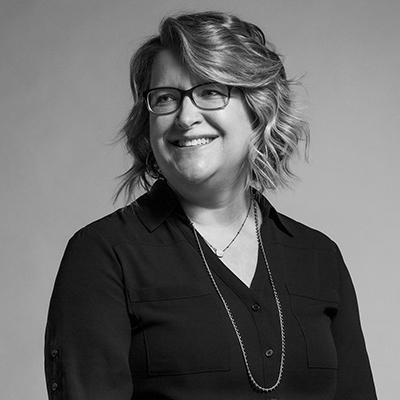News
Branding’s brave new world: podcasting, Episode 1.
Radio was the original storytelling darling.
It was an intimate, imaginative channel into peoples’ homes and hearts. Eventually, talk radio turned those stories into conversations, dialogues and debates. Today, podcasts have an uncanny ability to do both, allowing brands to deliver much-needed thought leadership in a genuine format that meets consumers on their own terms.
At Bader Rutter, we started creating podcasts for our clients a few years ago and our love of this platform only grows stronger every day. We have learned to be fanatical in selecting the best speakers, stories and sounds to create that “just-one-more-episode” kind of podcast you can’t turn off. In this first of our two-part series, we’ll share thoughts on sourcing the right podcast host and telling more impactive stories.
Casting your host: setting your podcast up for success.
Sourcing the right spokesperson is the biggest initial challenge when creating a branded podcast. And it should be — you are literally selecting the voice of your brand. Who best speaks to your audience? A knowledgeable subject matter expert is not enough — your host must also be an engaging communicator who connects with your customer audience. Through charm, authority, approachability, empathy and a dozen other emotional qualities, your host will create one-to-one connections with each listener. Once you’ve found an experienced, effective host, develop a good rapport to ensure you keep them. Unlike commercial actors, the podcaster talent pool remains relatively small, and a great host is worth every penny.
Typically, talent costs account for a large portion of your production budget. Costs for securing host talent can range from free for someone internal to hundreds of thousands for celebrities. We generally pay a flat fee per episode, though we’ve also paid day rates. Generally speaking, a budget of $750 – $1,250 per episode should be enough to sign an experienced professional.
Casting interesting guests also will improve your podcast’s success. Expect to make the same commitment to sourcing guests as you do with your host. After all, conversational chemistry is everything in audio. Engaging storytelling is an art and a good-looking face for television has no bearing on whether someone’s voice is compelling. A short phone call gives you an opportunity to listen to assess potential guests. During that conversation, listen to your guest’s story more than their expertise; how do they tell it? Does it resonate? Is it believable and inspiring?
Telling your stories: creating engaging, audience-forward content.
“If you are going to speak, have something to say.” Smart words to live by in this medium. Great podcasts are a natural evolution of our always-on, always-moving world: brand podcasts are largely unscripted advertising that leverage seemingly impromptu storytelling. But despite the discovery inherent in conversations, creating podcasts requires investing time upfront to establish guidelines around theme, structure and voice. An interview format is the most straightforward way to tell your story, but you shouldn’t settle on it simply as a default. Interviews are popular because they are cheaper, but they are only as engaging as the conversation they spark. Audio offers so much more potential to create landscapes in the imagination and, if done right, earns far deeper engagement from your audience. Before making a podcast, ask yourself the question that all good marketing strategies answer: What is the most compelling way to communicate my message?
Last year, our client Pioneer, needed to educate its salesforce. For years, the default solution was online learning, but we realized that their salespeople spend the bulk of their workdays driving to appointments in their cars and pickup trucks. In that context, a monthly e-newsletter or web learning portal wouldn’t work. Enter Corn Revolution, a content-heavy educational podcast featuring interviews with industry-leading geneticists, breeders and agronomists. Corn Revolution familiarized the salesforce with the science behind Pioneer seed technology — all from the comfort of their car as they drove from appointment to appointment.
If you’re interested in exploring a brand podcast, we encourage you to think long and hard about which speaker and format will best tell your story. How can you immerse your audience in your message? What will you offer to keep them listening? In part two of this series, we’ll share how to create audio ear candy through sound effects and perhaps the most important, and often most overlooked, step needed to create successful brand podcasts: promotion.
Interested in exploring more ways to harness the power of podcasts?
Let’s talk. We can share our vast experience and lots of ideas to set you up for success.
About the Author
Allison’s career has specialized in food communications, with a focus on food commodities and producer marketing programs. She has created strategic integrated marketing campaigns for high-profile commodity accounts, including The Incredible Edible Egg, The Pork Board, The Mushroom Council and Got Milk?
At Bader Rutter, Allison led the teams that developed breakthrough content for Corteva Corporate Communications, including the millennial moms blog, Platewise, and the popular podcast, “The Growing Debate.” Bringing narratives to life through dimensionalized and differentiated content is what makes her happiest.
After work, you’ll most likely find her on her spin bike or cooking for friends and family.

